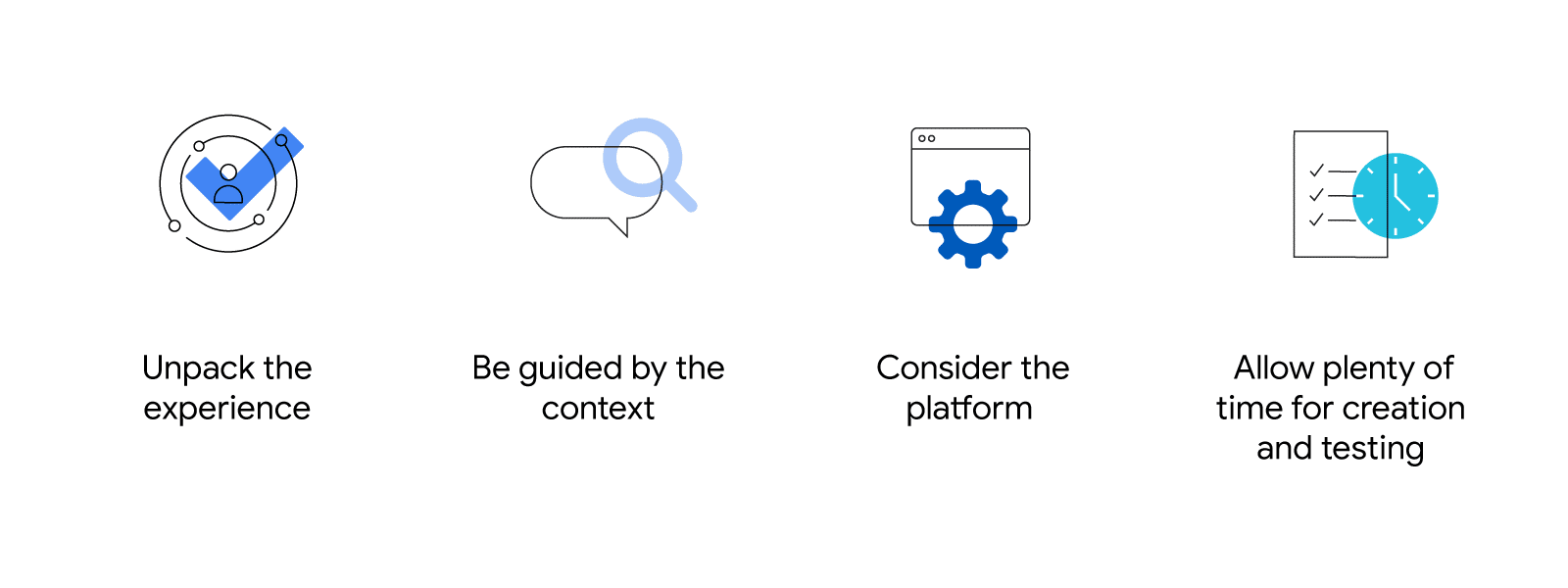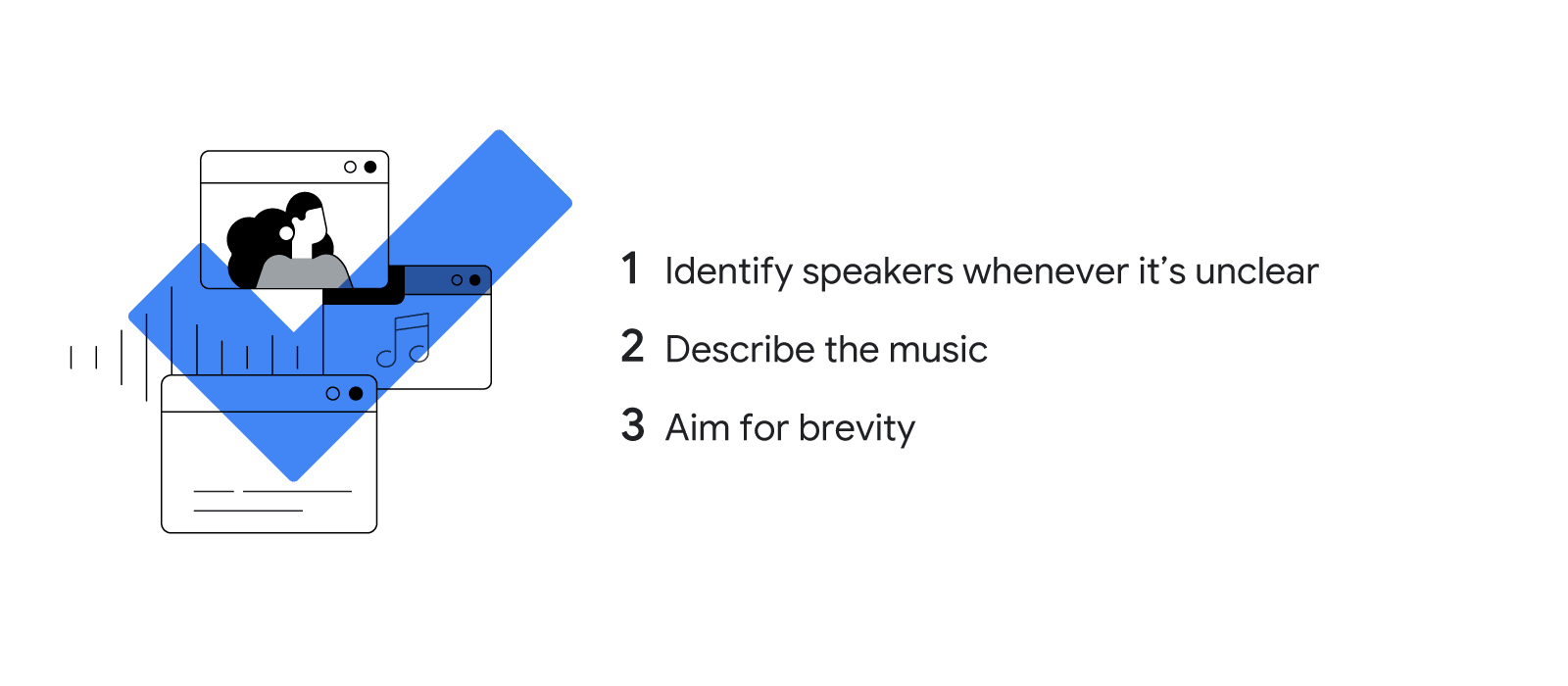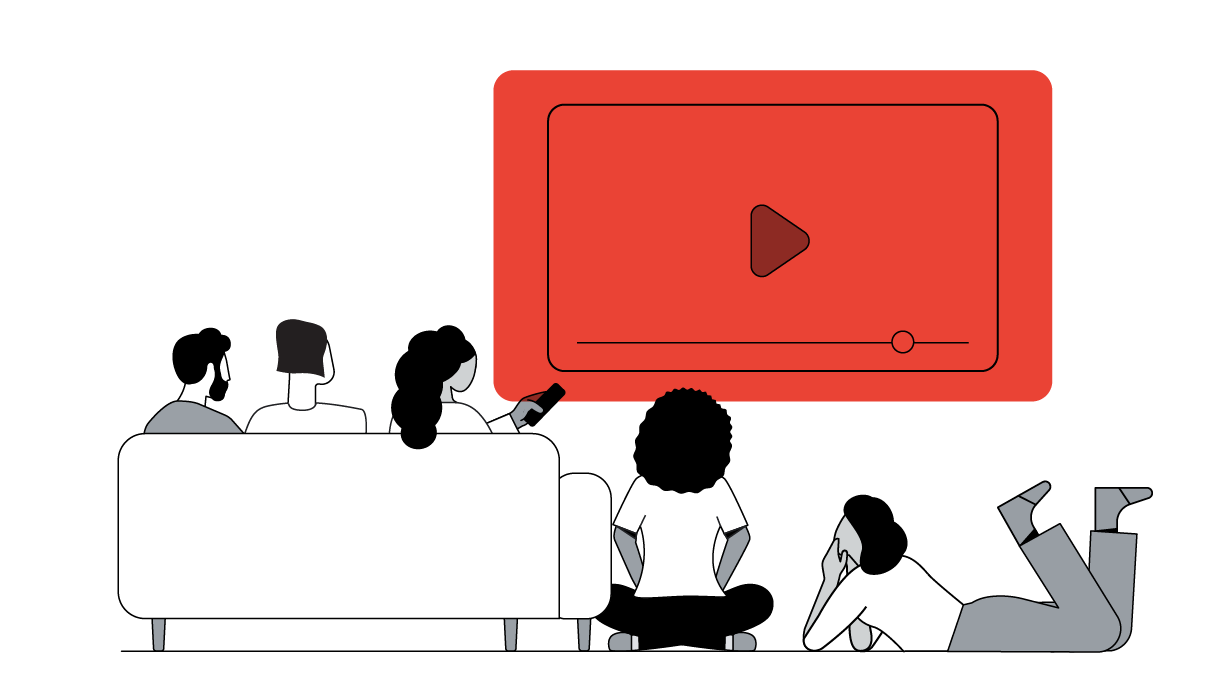Watching videos online is an ingrained part of modern life, so it makes sense that brands would invest heavily in video marketing. But there’s an important aspect of video content that often gets overlooked: captions.
Many marketers think of captions simply as a nice-to-have, while others assume they can be autogenerated or taken care of by live captioning technology. As a result, video captions are often all over the place in terms of quality and clarity, if they’re even there at all.
That’s a mistake. Accurate and expressive captions help everyone — whether they be deaf or hard of hearing, in a quiet space without their earbuds, or watching a video in their second language — experience what you created in the way you intended.
Accurate and expressive captions help everyone experience what you created in the way you intended.
That’s why, over the past year, we at Google have been rethinking how we approach captions for videos and films. Whether your video is a 15-second spot or a two-hour film, here are four things we’ve learned about captions that could help make your videos more impactful.

1. Unpack the experience
With any video, you process tons of important contextual information about what you’re seeing and hearing at the same time, sometimes in just a few seconds, and perhaps without even realising it. Successful video captions should not only unpack the most critical layers of that context, they should convey as much of the tone and mood as possible.
Achieving that for one of our recent videos, Google’s Year in Search 2020, was particularly challenging since there are a lot of separate elements. It features three minutes of still and motion clips, on-screen text, narration and quotes from everyday people and celebrities, and music changes, all woven together, often overlapping.
The tone also pivots and changes throughout the film, shifting from moments of levity to somber reflection and then hopeful optimism. The captions needed to recreate that emotional journey while being judicious with the amount of text and sense of timing.
In the end, we came to rely on some key rules of thumb that helped ensure our captions unpacked the video experience.

Identify speakers whenever it’s unclear. Given how much of the audio occurs over unrelated video clips, it was important to identify who was speaking when it wasn’t obvious. Making it clear when the audio shifted to the narrator was also important context, as was describing the everyday people who were speaking.
Describe the music. There’s nothing less helpful than simply seeing the phrase “[music playing].” We decided the captions should describe the music whenever it changed tonally — from its beginning as stark, vaguely electronic notes to moments where a choir hums somberly. So much time and artistry goes into picking the right tracks, and it makes sense to capture those choices in your captions.
Aim for brevity. The on-screen text of top search queries from 2020 are essential to the video’s creative. When the on-screen text matched the language of the audio, we didn’t need to repeat those search terms in the captions. We also found that three lines of text at once was a reasonable limit for captions, so as not to overwhelm viewers. Unpacking the experience involves thinking just as much about what to leave out of your captions as what to include.
2. Be guided by the context
It’s just not possible to capture every level of detail in your video captions; there are only so many seconds and pixels to spare. To decide what information is most important, think through the creative goals of your video, and what you want people who are seeing and hearing it to understand.
In the case of Google’s Searching for an End to Racial Injustice video, understanding the context of the audio is key to its impact.
The film shows trending searches from May and June of 2020 in the wake of George Floyd’s death, pairing stark typography with audio clips from various sources and no footage. In many cases, you can clearly identify the race of the speakers based on what they’re saying, whether it is a Black man asking a police officer why he’s being pulled over or a Black medical worker talking about the importance of their mental health. In this instance, capturing that context in captions made sense.
3. Consider the platform
Knowing where you want to host your video will inform many of your decisions, such as whether you’ll need closed or open captions, and how you’ll actually create them. YouTube, for example, has built-in captioning, which lets you add and edit captions without any special software. Instagram doesn’t currently support closed captioning, so you’d need to use open captioning, which embeds, or “burns,” the text onto the film or video.
Knowing which platforms you plan to use will also help you understand the specs you’ll need. For platforms like Facebook or Twitter, for example, you’ll most likely need to create an SRT file, essentially a numbered list with time stamps of what captions should show up where and for how long.
4. Allow plenty of time for creation and testing
Budget adequate time and resources to create video captions as your project progresses and heads toward completion. As with any piece of creative, getting captions right will take multiple rounds of reviews and finessing.
Knowing which platforms you plan to use will also help you understand the specs you’ll need.
If your video has multiple quick changes between speakers, scenes, and overall action, you’ll need to find a way to balance the amount of information you’re conveying with the ability of your audience to read captions and comprehend visuals at the same time. That’s hard to nail the first time, often requiring trial and error to get right, so make sure you leave yourself enough time.
The future of video captions
Captioning has come a long way, but there’s still work to be done. The more we can make edited captions an essential part of video marketing, the more we can challenge ourselves to make our work — no matter the medium and format — more accessible.







